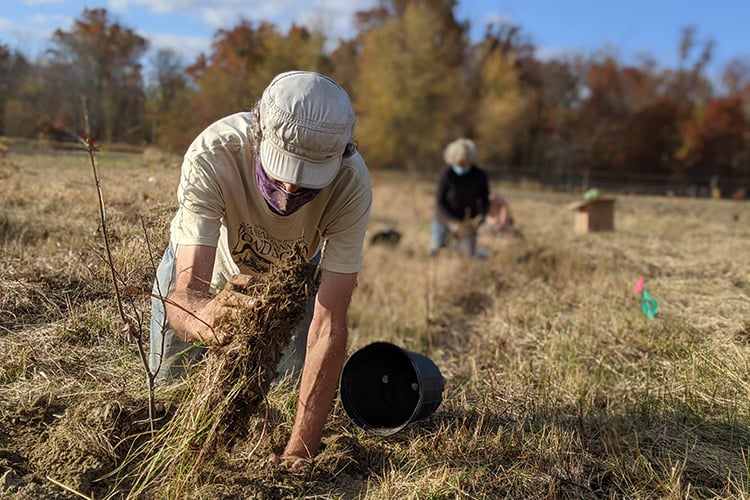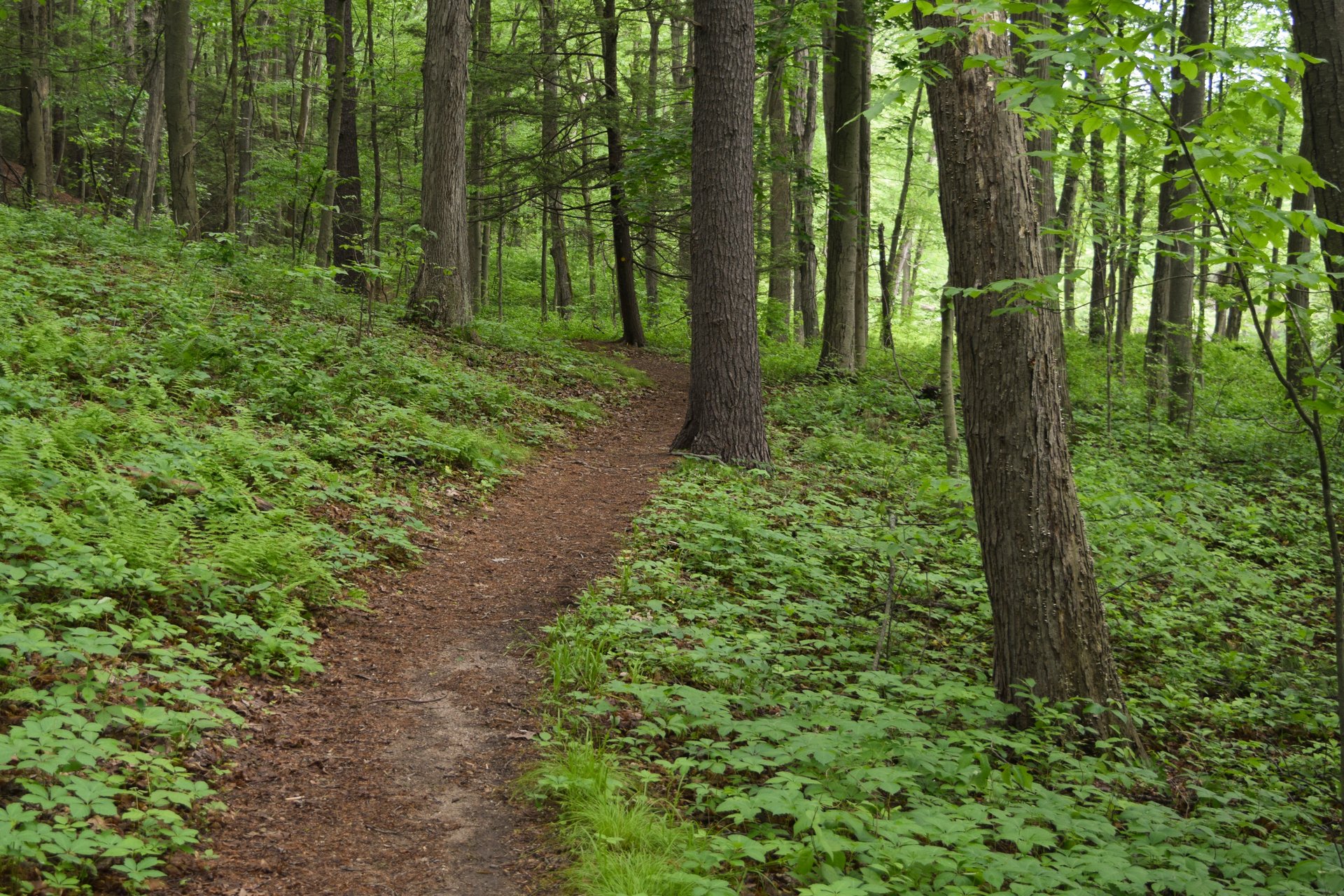More than 50 volunteers turned out in the last days of October 2020 to help restore a floodplain forest at Arcadia Wildlife Sanctuary in Northampton. Together, these nature heroes planted around 1,500 of the 2,000 trees and shrubs going in the ground before winter.
In this first phase of the project, 8.5 acres of field that is unproductive for both farming and grassland bird habitat will be turned back into land dominated by trees—including pin oaks, silver maples, and even American elm.
Floodplain forests are uncommon in Massachusetts, hosting rare plants and wildlife habitat, storing stormwater during floods, and, like all forests, keeping carbon out of the atmosphere.
But visitors to Arcadia who walk the Fern Trail are lucky to be able to see the large shagbark hickories and tulip trees, that make up one of the best examples of this natural community in the state. The restoration project will significantly expand Arcadia’s protection of this special forest type.

Project Expanded
In mid-July, MA Secretary of Energy & Environmental Affairs Kathleen Theoharides held a press conference at Arcadia under the cover of our new Teaching Pavilion. After announcing the recipients of MassWildlife's Division of Ecological Restoration (DER) Culvert Replacement Municipal Assistance Grant Program, she shared that a second round of funding had been approved for floodplain forest restoration at Arcadia. The $70,000 grant will make possible the second phase of planting 5 acres with over 1,000 trees and shrub in September 2021.
As he thanked all the partners at the state level for making this funding possible, Mass Audubon President David O’Neil described the project as a signal of hope and noted how it began even as we faced the challenges of the COVID19 pandemic.
Climate Implications
This is a climate adaptation project, preparing us for the impacts that have already begun and will be continuing through the coming years and decades.
Like all living things, trees have optimal conditions where they grow and reproduce. As temperatures continue to rise because of climate change, tree species’ ideal habitats are shifting northward; however, natural movement rates over generations of trees are generally too slow to keep up with rapid warming.
This restoration project assists the trees’ northward migration in two ways. First, for some of the species native to the Connecticut River Valley, saplings are being sourced from nurseries further south so they go into the soil already better adapted to warmer climates.
Second, volunteers are planting trees that currently don’t occur in the wild in Massachusetts, such as sweet gum, a tree that exists in floodplain forests further south, up to southern Connecticut. These choices increase the likelihood that the forest will flourish in the future, since Massachusetts’s climate is projected to become comparable to the climate of the south between 2070 and 2100.
The Massachusetts Division of Ecological Restoration has selected this restoration for Priority Project designation and have been a key partner in the process. Mass Audubon is also partnering with the Nature Conservancy’s Christian Marks, who has planted his Dutch-elm-disease-tolerant American Elms on the site.
Stay Connected
Don't miss a beat on all the ways you can get outdoors, celebrate nature, and get involved.



